Byron Conroy: Iceland
I have lived in Iceland for 6 years, and diving in Iceland has become reasonably famous over that time. This is primarily due to its most renowned dive site, the “Silfra fissure,” and the endless photo opportunities the 100m (328 ft.) visibility wonderland offers. It’s one of the few places on the planet where you can effectively take a landscape-style photo underwater.
One exciting thing about photographing it is that it changes throughout the year. In Iceland’s summer months, there is 24-hour daylight, with the sun rising high above for most of the day. In contrast, when there are only 3 hours of daylight in the winter, the sun only rises slightly, causing dramatic angled light to enter the fissure, creating more dramatic scenes.
However, Silfra, as unique as it is, is not the end of Icelandic diving. There is also a lot of excellent ocean diving in the summer months and ice diving in the winter months. We also have other hidden gems in the Highlands of Iceland that can be accessed in the summer months.
Ocean diving in Iceland can be done all around the Island. However, the best ocean diving for me is done in the North of Iceland around the geothermal cones of Strytan. The hot freshwater coming up from the seafloor into the cold ocean allows the slow build-up of minerals and forms the cones. There is extraordinary marine life around these, lots of different nudibranchs, wolffish, and cod. On and around the cones, we also have remarkable and colorful cold water coral life.
I am also lucky enough to be one of the few people on Earth to ever dive inside a flooded ice cave, at an elevation of around 1000m (3280 ft.) on the Langjökull glacier. In the summer months, the glaciers are melting, and the water flows underneath them, forming pathways and tunnels. As the winter arrives, the glacier dries upstarts, freezing, leaving these ice tunnels as ice caves. In early Spring, the water starts to melt again. We had the opportunity to dive into the flooded cave for a brief window before it turned into a full river-type system, but while the ice was still firm enough for the cave roof to be secure.
All of my photos have been shot on a Canon 5D Mk.4, using a combination of on and off-camera lighting. I hope they demonstrate the diversity and photo opportunities that cold water diving in the world’s more extreme environments hard to offer. Water temperatures for these dives are from 0.5 to 10°C (32.9 to 50°F).
Byron runs tours and photographic experiences through his business: Arctic Adventures.
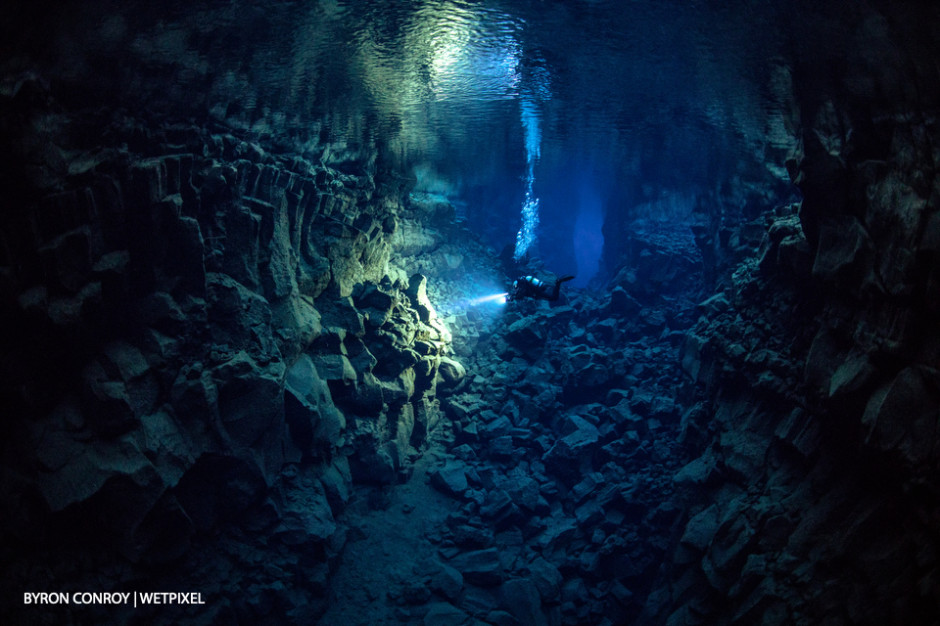
Silfra at night.
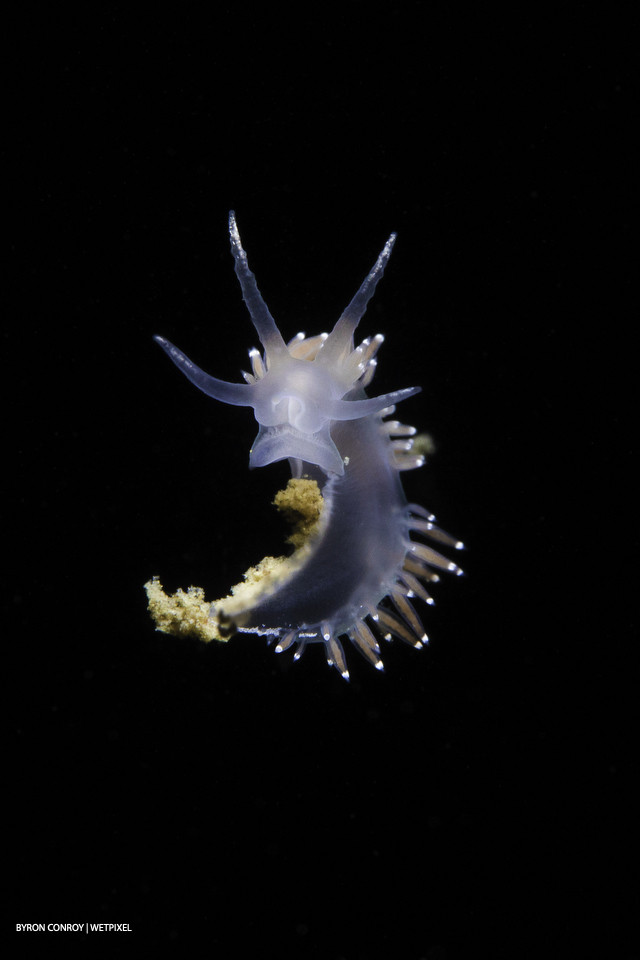
Facelina sp. nudibranch
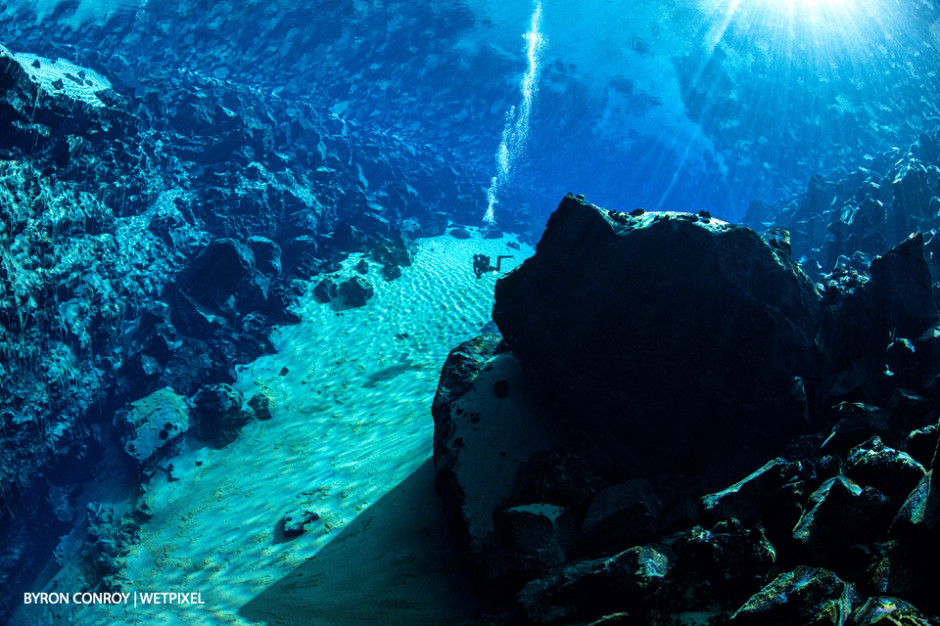
Odin dive site in sunbeams
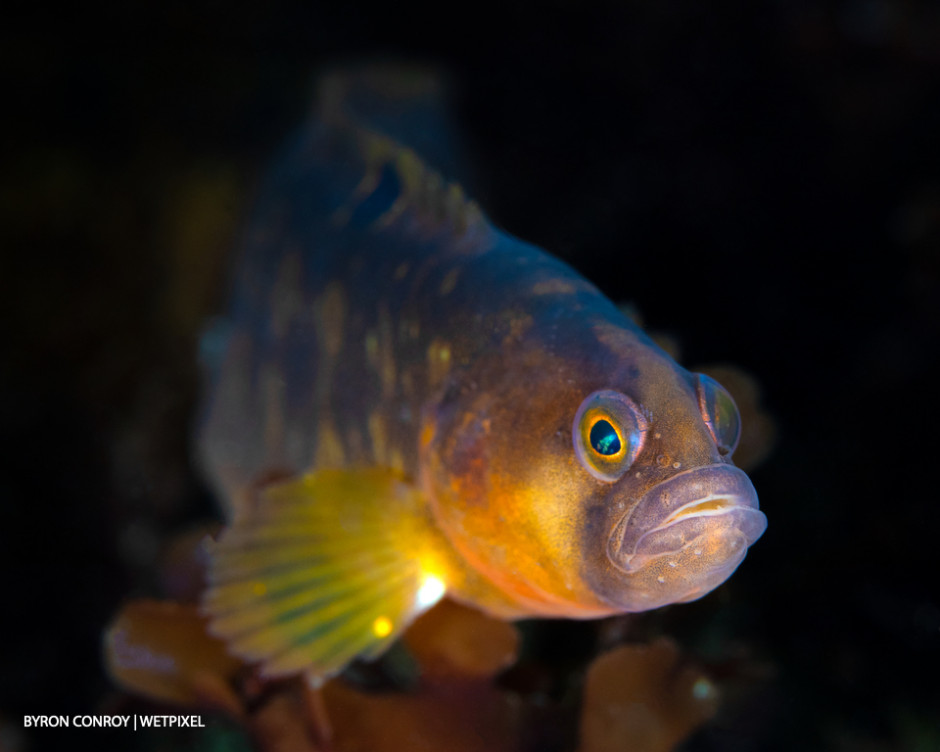
Butterfish (Pholis gunnellus)
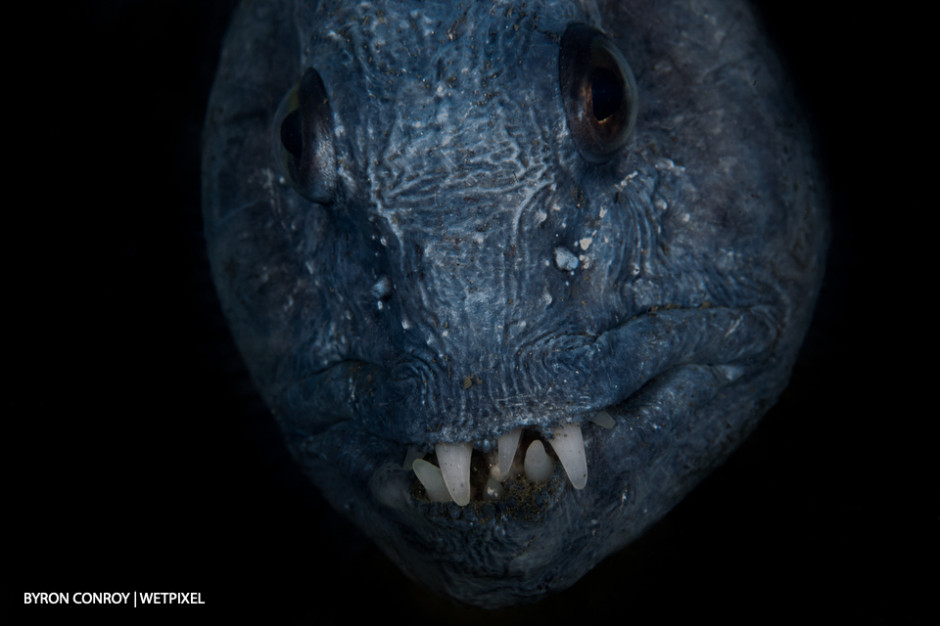
Wolf eel (Anarrhichthys ocellatus).
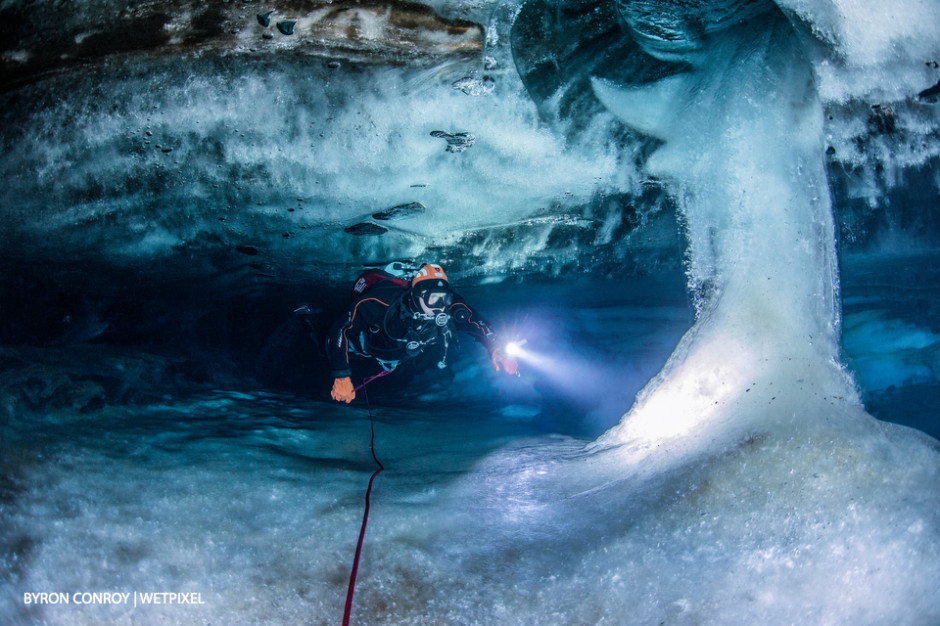
In an ice cave under a glacier.
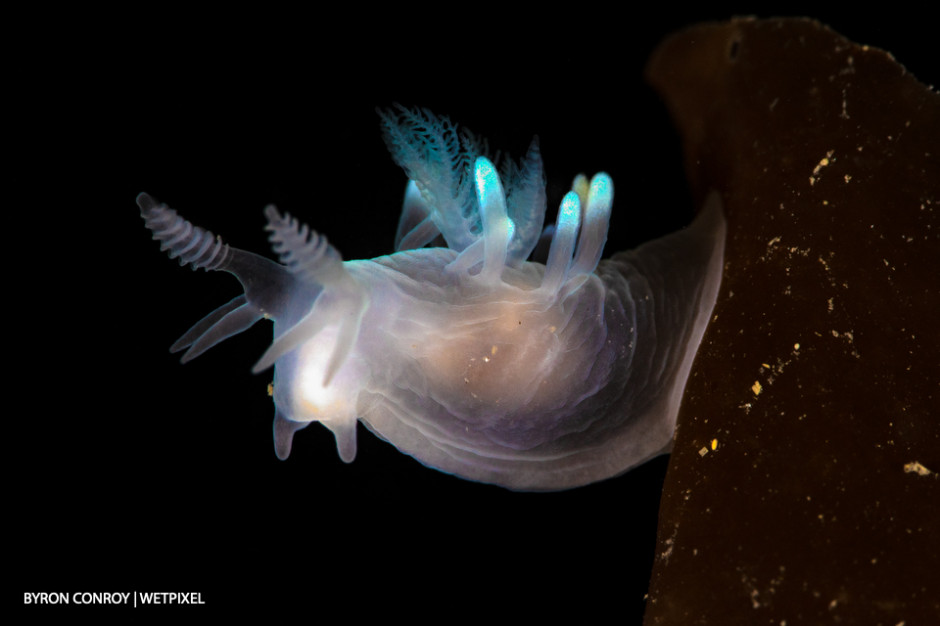
Facelina sp. nudibranch
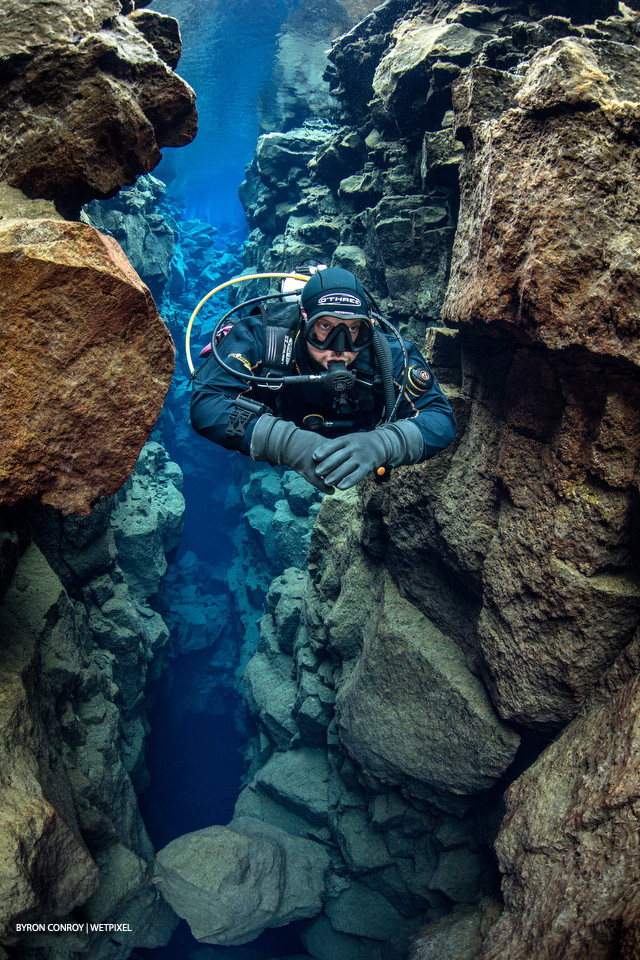
Silfra at night.
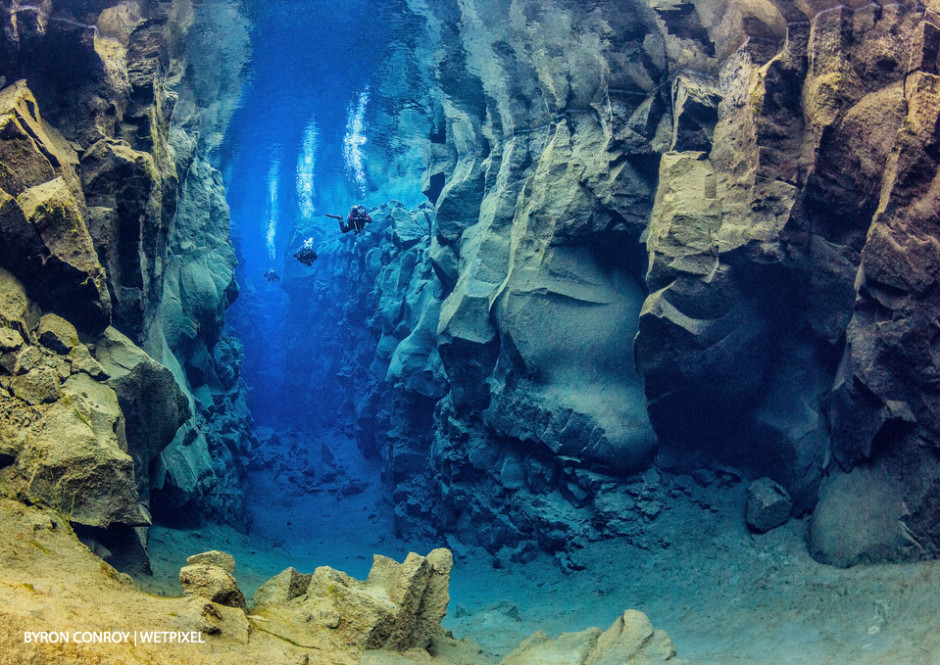
Ice cave cathedral.
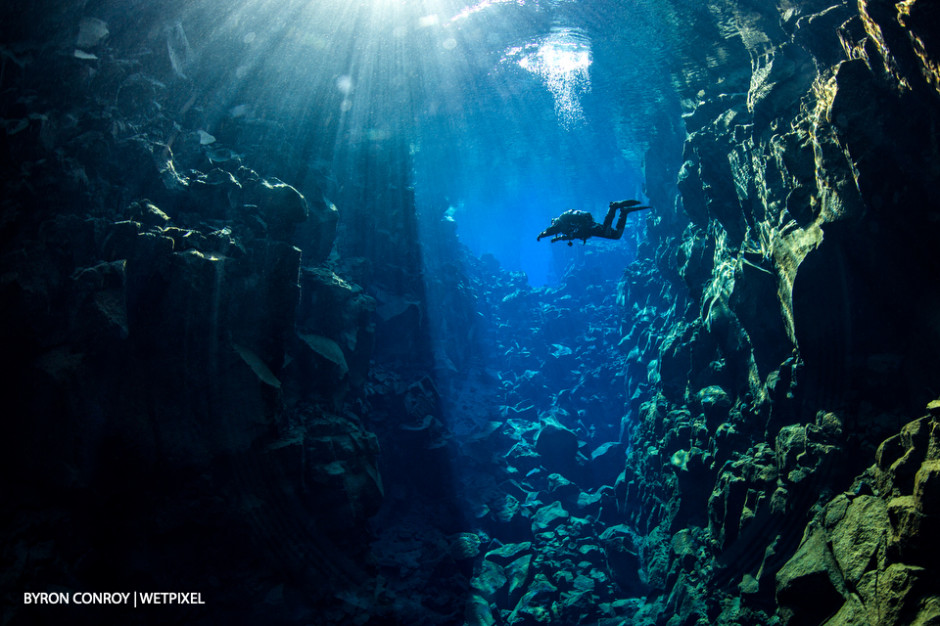
Silfra at dawn.
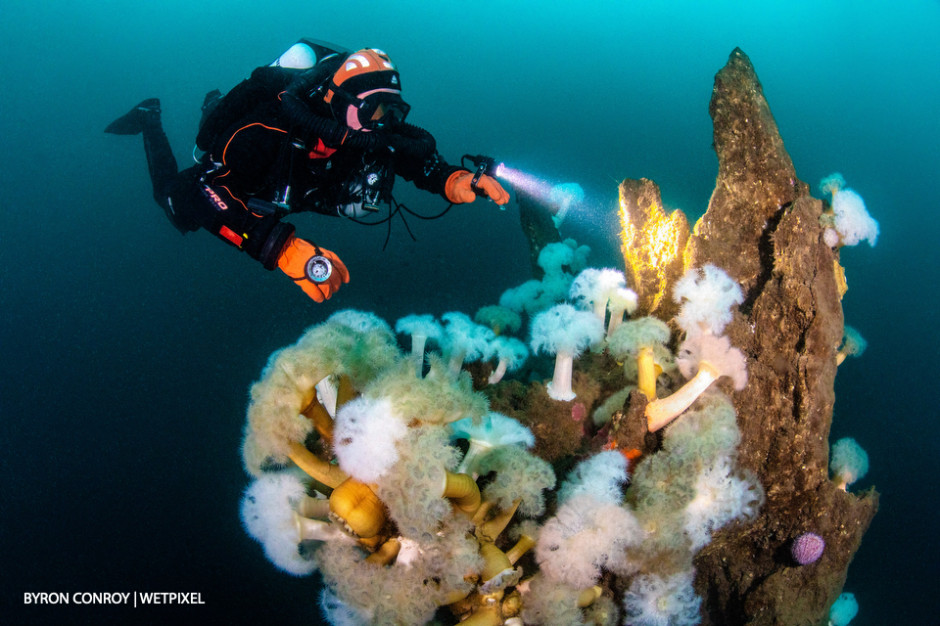
Soft corals in the cool Icelandic waters
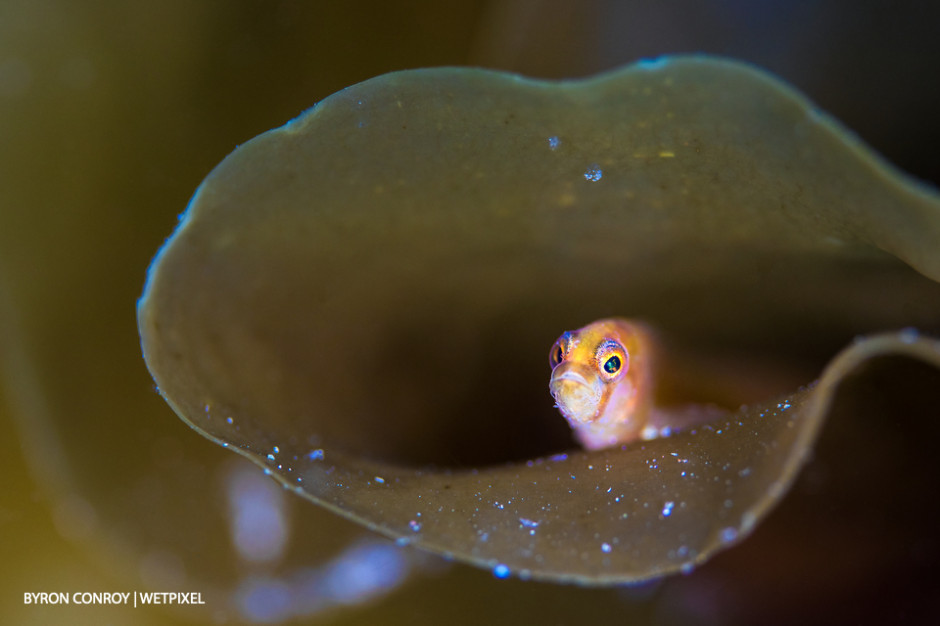
Two-spotted goby (Gobiusculus flavescens) in kelp.
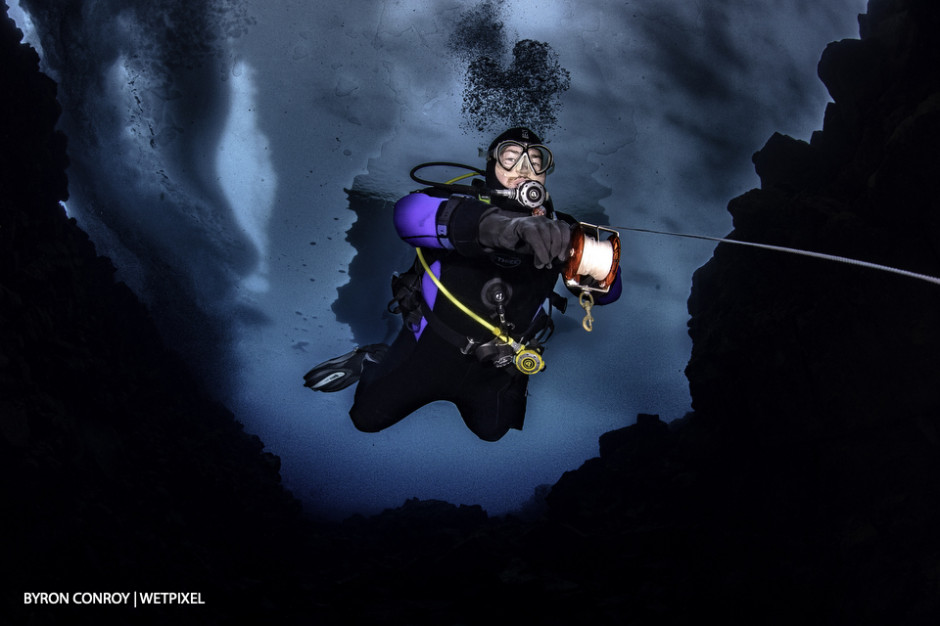
Diving under the ice.
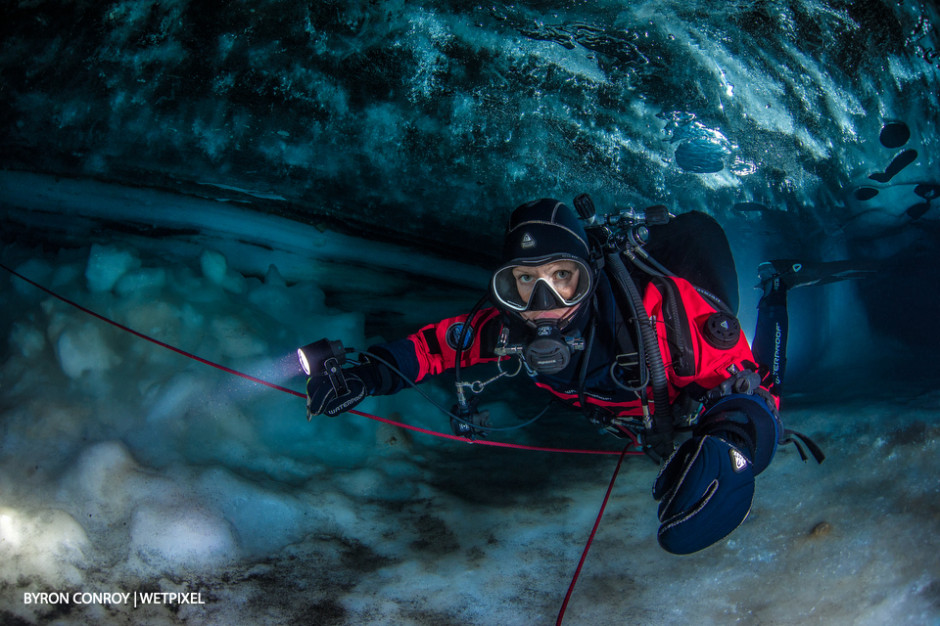
A model poses in an ice cave.
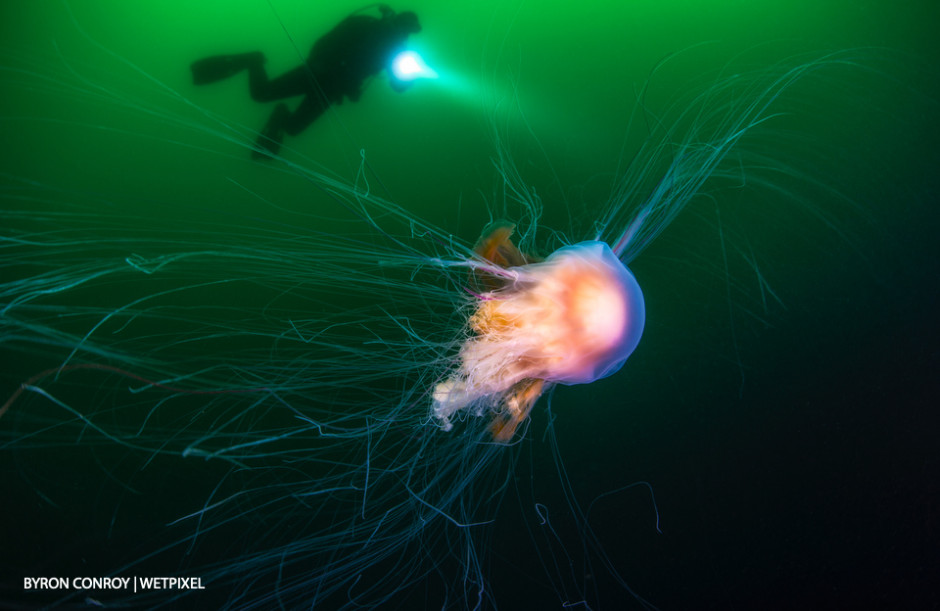
Lion's mane jellyfish (Cyanea capillata).
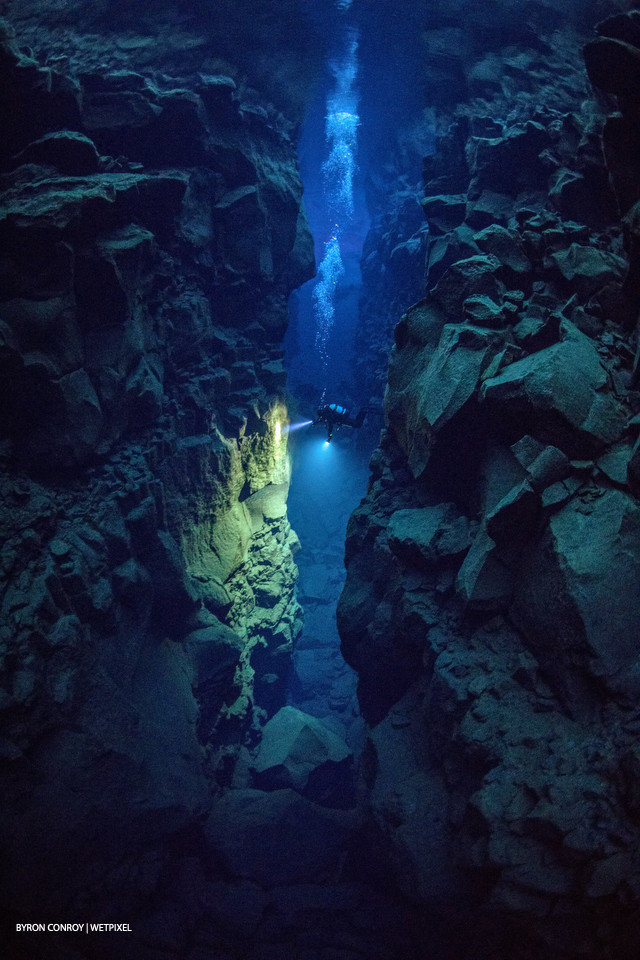
Silfra at night.
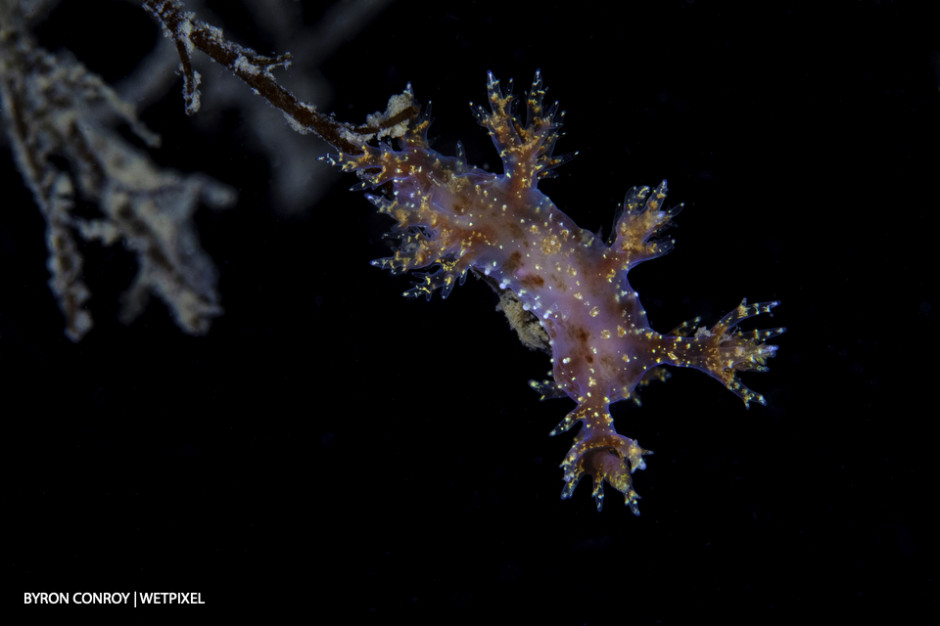
Dendronotus frondosus nudibranch.
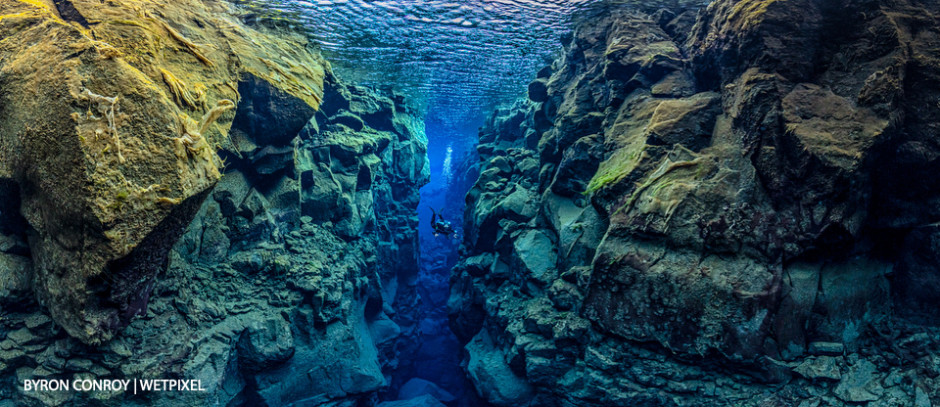
Sifra panorama
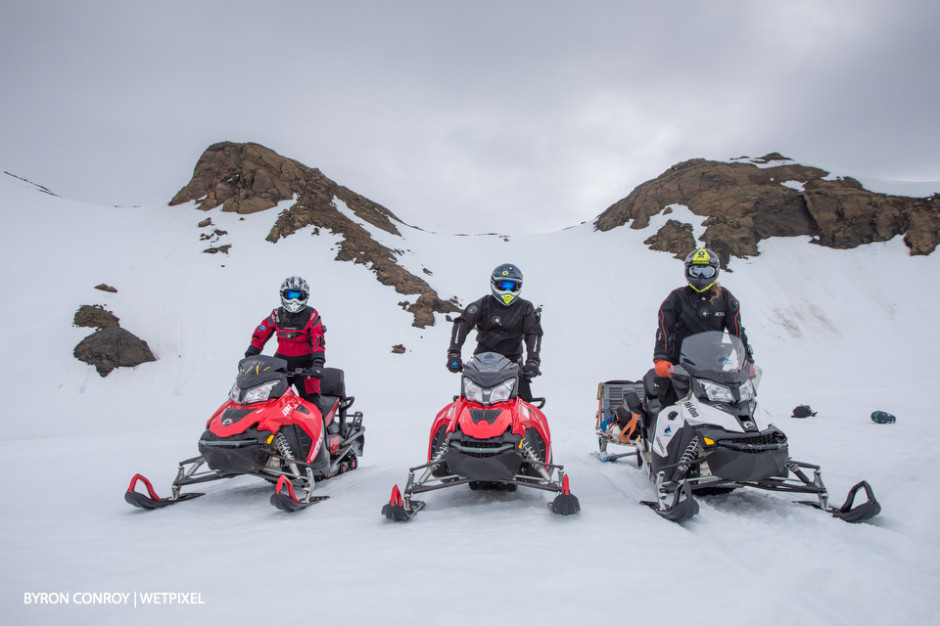
Getting to the dive sites!
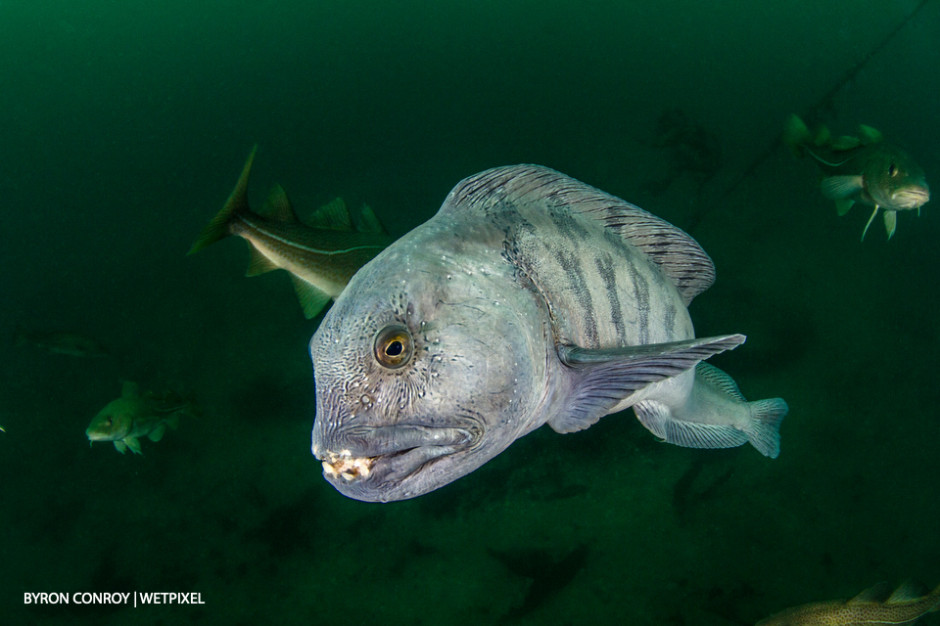
Wolf eel (Anarrhichthys ocellatus).